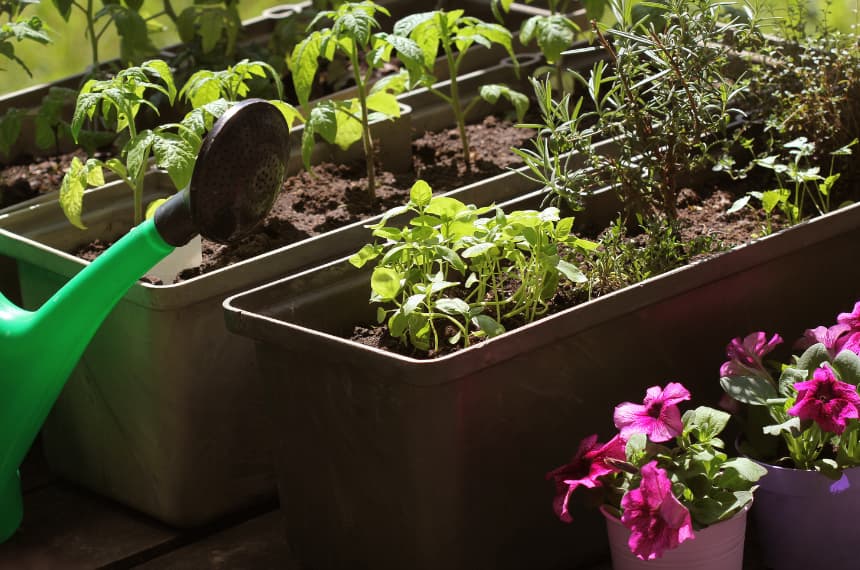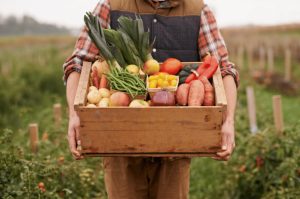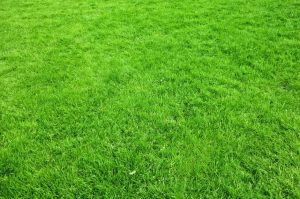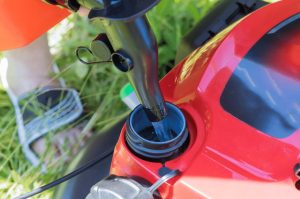Perth, Western Australia’s capital city, is known for its scorching, dry summers and moderate, wet winters. This creates a one-of-a-kind environment for a wide variety of veggies and other plants that flourish in such settings.
Understanding the planting seasons is essential for every gardener, whether a seasoned horticulturist or a novice. You may ensure a good harvest and healthy growing plants by aligning your planting timetable with Perth’s environment.
Four seasons in Perth explained
Perth’s unique Mediterranean climate has numerous seasonal changes, each providing unique conditions for various varieties of vegetables.
Below, we’ll take you through each season so you can better understand what growing conditions you’re up against.
Spring (September to November)
Spring in Perth is warm and moderate, with temperatures ranging from 11.7°C to 23.6°C on average. As the ground warms up from the winter, soil conditions are suitable for spring planting, particularly ginger. Plant growth is also aided by longer daylight hours.
Accordingly, we recommend maintaining sufficient irrigation because the spring months can be very dry.
Summer (December to February)
Perth’s summers are hot and dry, with average temperatures frequently topping 30°C. The soil might quickly dry out during this season, necessitating more frequent watering to ensure plant health. It is preferable to cultivate heat-tolerant veggies during this season.
Autumn (March to May)
Autumn brings cooler temperatures ranging from 13.7°C to 25.4°C and more rain. The soil remains warm, allowing many vegetables to flourish. Autumn is frequently a good time for planting because the conditions are less harsh than during the peak summer months.
Winter (June to August)
Perth’s winters are comparatively moderate, with average temperatures ranging from 8°C to 18°C. While there is more rain at this time, the cooler temperatures and wetter circumstances can make certain plants difficult to grow. Some cool-season veggies, on the other hand, flourish in these conditions.

What vegetables to plant now Perth
Year-round vegetables to grow in Perth
Because of the regular sunlight, occasional rainfall, and suitable soil conditions, Perth’s climate is particularly favourable for a range of vegetables that may grow year-round.
Before getting into season-specific veggies, we’ll look at several vegetables that can grow year-round.

Cabbage
Cabbage is a robust vegetable that can withstand Perth’s fluctuating temperatures. It enjoys full sun but may tolerate partial shade during the hottest months.
Plant in well-drained, fertile soil that has been treated with compost or organic debris. Harvesting occurs when the heads grow hard and reach the desired size, which might take 50-180 days, depending on the variety.
Celery
Celery, a high-water-demanding vegetable, thrives in Perth’s winter and spring when rainfall is heavier.
Maintain soil moisture, especially during the hot summer months. It is better to have full sun than partial shade. Harvesting is possible when the stalks are about 20 centimetres long, about 16 weeks after planting.
Parsnips
Root vegetables like parsnips flourish in full sun and well-drained soil. They require little upkeep and can withstand both colder winters and hotter summers.
Harvesting can begin when the roots reach the desired size, usually 120-180 days following planting.
Radish
Radish is a fast-growing crop that can withstand seasonal fluctuations in Perth. They prefer full light and soil that is loose and well-drained.
Consider watering regularly, especially during the hot summer months. Radishes can be harvested when they reach a size of 20-70 days following sowing.
Silver beet
Silver beet, or Swiss chard, thrives all year but prefers lower temperatures. We recommend planting in a sunny spot with well-drained soil.
Remember to water it regularly, especially during dry periods. When the leaves reach the correct size, usually 50-60 days after planting, they can be picked.
Sugar and snow peas
Snow and sugar peas are cool-weather crops that can withstand mild heat, making them ideal for year-round farming.
Plant them in a sunny, well-drained location. Harvest pods while they are young and fragile, which is usually 60-70 days after sowing.
What to plant in Spring
Spring in Perth offers milder temperatures and sporadic rainfall, which are great circumstances for many veggies to thrive. As the soil begins to warm, now is the time to plant various vegetables.
Here are a few of my favourite veggies for spring planting:

Sweet potato
Sweet potato plants thrive in hot weather and are ideal for Perth’s warm spring. Plant the cuttings in a sunny spot with well-drained soil and plenty of room to spread.
Although drought-tolerant, sweet potatoes will benefit from regular watering during dry spells. Harvest when the leaves begin to yellow and die back approximately 4-6 months after planting.
Capsicums and chillies
Capsicums and chillies are warm-weather crops, so planting them in the spring is ideal. They prefer full sun and rich, well-drained soil. Capsicums and chillies can be cold-sensitive, so put them in raised garden beds or containers for improved temperature control. Harvesting can commence when the fruits are firm and brightly coloured, normally 70-90 days following planting.
Eggplant
Eggplants thrive in warm weather, so planting in the spring is ideal. Choose a sunny location with well-drained soil that is rich in organic materials. Watering eggplants regularly is necessary, but excessive watering might cause root rot. Harvest eggplants when they have reached full size, and the skin has turned shiny, usually 100-150 days after planting.
Other Spring plants to grow
Here are five plants that complement the spring vegetables recommended earlier and add beauty and balance to your garden:
- Marigolds: These vibrant flowers are not just a feast for the eyes but also fantastic companions for many vegetable plants, including tomatoes and peppers. Marigolds repel nematodes and other pests thanks to their strong scent. Planting them around your garden can help protect your spring veggies and add a splash of colour.
- Sweet Alyssum: Sweet alyssum can be planted alongside leafy vegetables like lettuce and spinach, forming a living mulch that helps retain soil moisture and suppress weeds.
- Basil: Known for its aromatic leaves, basil is a great companion for tomatoes and provides mutual support by repelling flies and mosquitoes. It’s believed that planting basil near tomatoes can help improve their flavour. Basil also attracts pollinators, ensuring your garden is buzzing with life.
- Nasturtiums: These easy-to-grow flowers offer edible leaves and blossoms, adding a peppery taste to salads. As companions to vegetable plants like cucumbers and radishes, nasturtiums are a trap crop for aphids, drawing them away from your veggies. Their bright blooms also attract pollinators and beneficial insects.
- Chives: Planting chives near carrots can help repel the carrot fly. At the same time, their oniony scent can deter aphids and improve the flavour of tomatoes. Chives are useful for their pest-repelling properties and produce pretty purple flowers that can add a mild, onion-like flavour to dishes.
Incorporating these plants into your spring garden enhances its aesthetic appeal and promotes a healthier, more productive vegetable garden. Choosing companions that offer mutual benefits creates a vibrant ecosystem where plants support each other’s growth and vitality.
What to plant in Summer
Perth’s summers are typically warm and dry, with extended daylight hours that promote rapid growth. Summer gardening success is dependent on selecting heat-tolerant vegetables and providing appropriate water.
Here are some vegetables to consider planting in winter:
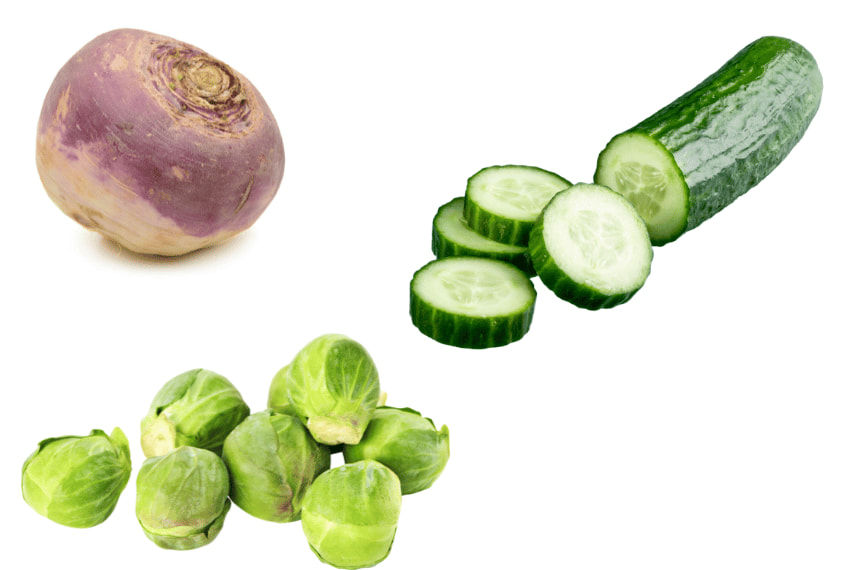
Brussels sprouts
Despite being a cool-weather crop, Brussels sprouts can be planted in early summer for a harvest in late autumn or early winter in Perth.
Brussels sprouts prefer well-drained soil, full sun to light shade, and consistent water delivery. It is critical to watch for pests such as aphids and caterpillars. They are ready to harvest when Brussels sprouts are firm and about 2-5 centimetres in diameter.
Cucumber
Cucumbers are a classic summer vegetable that thrives in heat and sunlight. Choose a location in your garden with full light and well-drained soil. To prevent mildew, keep the soil moist but avoid soaking the leaves. Cucumbers can usually be picked 50-70 days after planting when they reach the optimum size.
Turnips
While turnips are often planted as a cool-weather crop, they may withstand Perth’s summer heat if well-watered. They prefer a sunny location and well-drained soil.
The key is to pick them when they are still young and fragile, which is normally approximately 2 months after planting.
Other Summer plants to grow
Companion planting is vital in maintaining a healthy garden ecosystem, especially during the warmer months. Here are five plants that not only withstand the summer heat but also complement and protect the vegetables recommended for this season:
- Zinnias: These colourful and vibrant flowers are perfect for adding colour to your summer garden. Zinnias attract beneficial insects like ladybugs and butterflies, which help control pest populations. They’re great companions for cucumber plants, offering a natural defence against cucumber beetles.
- Sunflowers: Towering sunflowers do more than just make a statement; they also provide shade and support for lower-growing plants. Planting sunflowers near beans can help protect the beans from wind while attracting pollinators to the garden. Their large heads can also offer shade to more sensitive plants, providing relief from the intense summer sun.
- Lavender: Known for its soothing fragrance and beautiful purple blooms, lavender is a fantastic companion for various vegetables, including those that thrive in summer, like peppers. Lavender repels fleas and moths while attracting pollinators. Its strong scent can help mask the smell of your vegetables, keeping them hidden from pests.
- Oregano: This hardy herb adds flavour to your dishes and is a powerful companion plant. Oregano deters many pests that bother summer vegetables and can improve the overall health of your garden. Plant oregano near your peppers and eggplants for natural pest control.
- Mint: While mint should be planted cautiously due to its invasive nature, it’s an excellent companion for brassicas (like Brussels sprouts) and tomatoes, repelling pests like ants and aphids. Planting mint in containers can help keep it under control while benefiting from its pest-repellent properties and refreshing aroma.
Incorporating these plants into your summer garden helps manage pests naturally and adds beauty and diversity. Each plant brings its own benefits, from attracting beneficial insects to providing shade and improving the flavour of your vegetables. With careful planning, your summer garden can be a vibrant ecosystem full of life and bounty.
What to plant in Autumn
Autumn in Perth brings colder but still mild weather and more consistent rainfall, making it ideal for planting various vegetables.
The earth retains summer heat during this season while receiving more moisture, promoting healthy development.
Here are some vegetables suitable for autumn planting:
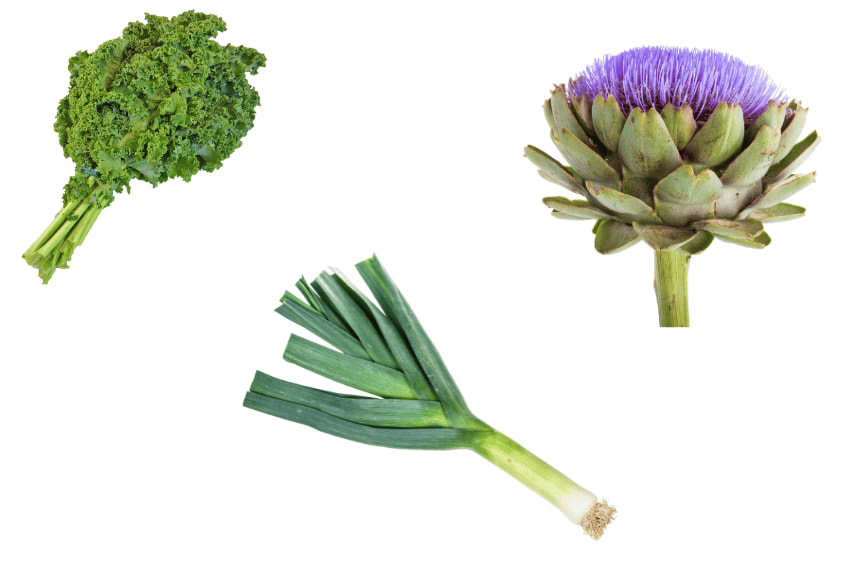
Kale
Kale thrives in lower temperatures, making fall an ideal season to plant. Plant seeds in well-drained, nutrient-rich soil in a site with full sun to moderate shade. Kale prefers a pH range of slightly acidic to neutral.
Maintain wet soil and keep an eye out for pests such as aphids. Harvesting can begin when the leaves are around the size of your hand, which normally occurs after 50-65 days.
Leek
Leeks are a cool-season crop that can be planted in early October for a winter harvest. They prefer bright sunlight and healthy, well-drained soil. Leeks require regular watering and benefit from a light mulch to keep their roots cool and moist.
When the stems are approximately 2.5 centimetres in diameter, they are normally ready to harvest in around 100 days.
Artichoke globe
Globe artichokes are a one-of-a-kind and satisfying vegetable to cultivate—plant in early autumn in a sunny, well-drained site. Plants can spread up to 1.5 metres in diameter, requiring frequent hydration and room to flourish.
Harvest the buds before they bloom the following year, usually in late spring or early summer.
Other Autumn plants to grow
Autumn in Perth offers a cooler, more forgiving climate for gardening, presenting an opportunity to introduce a variety of plants that can complement and enhance your autumn vegetable garden. Here are five plants that are perfect for growing alongside your autumn veggies and offer additional benefits such as pest control, pollination, and aesthetic appeal:
- Calendula: Often known as pot marigold, calendula is a versatile companion plant that can benefit a wide range of autumn-planted vegetables like kale and leek. Its bright orange or yellow flowers attract beneficial insects, including pollinators and predators of common pests. Calendula also has medicinal properties and can be used to soothe skin irritations.
- Borage: With its striking blue flowers, borage is beautiful and a fantastic companion for autumn vegetables such as brassicas (cabbage, kale) and root vegetables. Borage deters cabbage worms and can improve the growth and flavour of the plants around them. Additionally, its edible flowers can add a cucumber-like flavour to salads.
- Dill: An herb with feathery foliage, dill is a great companion for brassicas by helping to repel pests like aphids and cabbage loopers. Dill attracts beneficial insects such as wasps and hover flies, which are natural predators of many garden pests. Plant dill near your autumn veggies to create a more resilient garden ecosystem.
- Coriander (Cilantro): Coriander can be grown in the cooler autumn months and is beneficial when planted near spinach and lettuce. It attracts beneficial insects, including tachinid flies and parasitoid wasps, which help control pest populations. The herb is versatile in the kitchen and used in various culinary dishes.
- Parsley: This culinary herb not only thrives in cooler weather but also serves as a companion to many autumn vegetables, including tomatoes and asparagus. Parsley attracts beneficial insects, such as predatory wasps and butterflies. At the same time, its dense foliage can provide a microclimate to shelter beneficial ground beetles. Its vibrant green leaves can also brighten up the autumn garden.
Incorporating these plants into your autumn garden not only enriches the biodiversity of your space but also supports the health and productivity of your vegetable crops. By choosing companions that offer mutual benefits, you create a garden that is productive, beautiful, and beneficial for the environment.
What to plant in Winter
Cooler temperatures and heavier rainfall mark Perth’s winter. Although it may appear paradoxical, this season provides a fantastic opportunity for gardeners to grow various crops.
Here are some winter-friendly vegetables that we enjoy:
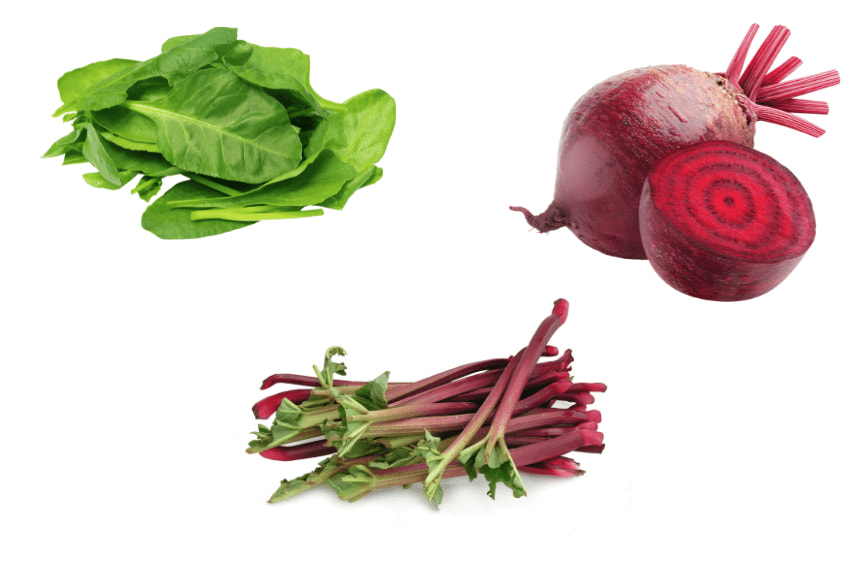
Beetroot
Beetroots are cold-tolerant and ideal for a Perth winter veggie garden. They prefer full light and soil with a neutral pH. Beetroot seeds can be put directly into the garden, making sure to space them evenly.
Watering regularly promotes healthy growth, while excessive watering might result in leafy tops and weak roots. Harvest beetroots when they are the size of a golf ball, which takes about 50-70 days.
Rhubarb
Rhubarb is a winter vegetable that thrives in chilly temperatures. Rhubarb should be planted in a sunny spot with well-drained, healthy soil.
Make sure each plant has enough space to grow. Water thoroughly and mulch around the base during dry spells to conserve moisture. In its second year, rhubarb will be ready for harvest.
Spinach
Spinach is a cold-weather crop that can be sown in the winter for a spring harvest. It prefers full sun to partial shade and well-drained, organic-rich soil.
Watering should be done regularly, but avoid soaking the soil. When the outer leaves are large enough to eat, which normally takes 37-45 days, harvest them.
Other Winter plants to grow
While the cooler temperatures may limit some options, plenty of plants can still complement your winter vegetable garden, providing benefits such as pest control, pollination, and visual interest. Here are five plants ideal for growing during the winter months alongside your recommended winter veggies:
- Violas and Pansies: These hardy flowers can bring colour to your winter garden, thriving in cooler temperatures. Planting violas and pansies near leafy greens like spinach and Swiss chard can help attract pollinators, ensuring your vegetables receive the attention they need for successful growth. Their edible flowers can also add a splash of colour to winter salads.
- Alyssum: Alyssum is a low-growing, fragrant flower that can act as a living mulch, helping to retain soil moisture and suppress weeds. Its tiny, honey-scented flowers attract beneficial insects, such as predatory wasps and hover flies, which can help control aphid populations on nearby winter crops like kale and broccoli.
- Cyclamen: Offering a pop of colour during winter, cyclamen are excellent for brightening the garden and can be planted around the edges of your vegetable plot or in containers. While not directly beneficial to vegetables regarding pest control, their vibrant flowers can help attract pollinators and keep the garden lively during the cooler months.
- Garlic: Planting garlic around winter crops like beetroot and spinach can help deter pests, including aphids and rabbits, thanks to its strong scent. Garlic takes several months to mature, making winter an ideal time to plant for a late spring or early summer harvest. It also requires minimal space, making it suitable for interplanting among larger winter vegetables.
- Thyme: This hardy herb can withstand cold temperatures and is beneficial when planted near brassicas, such as cabbage and broccoli, repelling cabbage worms and other pests. Thyme’s small, fragrant leaves can be harvested throughout the winter, providing fresh flavour for your dishes. Its flowers also attract pollinators, supporting the overall health of your garden.
Incorporating these plants into your winter garden not only maximises the use of your space during the cooler months but also supports a healthy, vibrant, and productive garden ecosystem. By choosing companions that offer mutual benefits, you ensure that your garden remains a thriving haven for plants and beneficial wildlife throughout the winter.
Conclusion
Planting vegetables in their best season ensures a good and bountiful yield. With its distinct seasonal fluctuations, Perth’s unusual environment gives gardeners a wide range of opportunities to experiment with various vegetables.
From the bright sweet potatoes and chillies of spring to the substantial leeks of autumn, each season has its own set of veggies to plant. Even in the dead of winter, Perth’s environment allows for cultivating hardy vegetables such as beetroot and spinach.
Understanding the seasons will be your most valuable ally in this gratifying adventure, whether you’re a seasoned green thumb or a beginner ready to get your hands dirty. Embrace nature’s rhythms, follow the advice in this book, and you’ll soon have a flourishing vegetable garden that reflects Perth’s changing seasons.
Not from Perth? Check out our Adelaide, Tasmania, Melbourne and Sydney planting guides!

